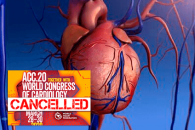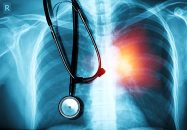Watch again our Webinar on “Left Main Coronary Disease Controversy After EXCEL 5 Years” on our Youtube account. We are interested in your opinion. Please, leave your comments, thoughts, questions, etc., below. They will be most welcome.
Webinar SOLACI Research | Left-Main Disease Controversy After EXCEL 5 years
We are interested in your opinion. Please, leave your comments, thoughts, questions, etc., below. They will be most welcome.
Olive Oil and Cardiovascular Risk: The Higher the Consumption, the Lower the Risk?
High olive oil intake was associated with lower risk of coronary heart disease and cardiovascular disease in two large prospective cohorts of men and women. The substitution of margarine, butter, mayonnaise, and dairy fat with olive oil can have a significant impact on cardiovascular health. The benefits of olive oil intake have been well studied…
Compare-Acute Sub-Study: Natural History of Non-Culprit Lesions in MI
The aim of this study was to determine the prognostic value of fractional flow reserve (FFR) of non-culprit lesions in STEMI patients. We analyzed data of all Compare-Acute patients (Comparison Between FFR Guided Revascularization Versus Conventional Strategy in Acute STEMI Patients With MVD) after PCI, from lesions assessed with FFR and treated medically. The treating…
Virtual ACC 2020 | ISCHEMIA: Quality of Life, Not a Soft Endpoint
In the general study, an invasive strategy followed by revascularization (when necessary) vs. an initially conservative strategy with OMT resulted similar in patients with stable CAD with moderate to severe ischemia. A secondary end point of this analysis were angina symptoms and quality of life. Angina symptoms, functional activity and quality of life were assessed…
Virtual ACC 2020 | Relationship between Ischemia Severity and CAD
The ISCHEMIA trial enables countless sub-studies. Many of them have made part of the virtual ACC 2020, and among them you will find the present study. This analysis finds it is the anatomy — rather than ischemia — which predicts events. And even more interesting is the fact that revascularizing this particular anatomy will not…
Routine Continuous Monitoring After Angioplasty Might Not Be Necessary
According to a recent study published in Circ. Cardiovasc Interv, after a scheduled angioplasty, the rate of arrhythmia requiring some kind of treatment is very low, low enough to deem unnecessary the routine monitoring of all patients. The standard policy at many institutions is continuous cardiac monitoring for several hours after undergoing coronary angioplasty, with…
Reliability of FFR in Patients with Diabetes: Are Other Parameters Necessary?
Diabetes does not seem to alter the results of a fractional flow reserve (FFR) measurement in a given lesion. Recently, expert opinions and small studies had questioned the reliability of FFR in this specific patient subgroup. This new observational study soon to be published in JAMA vanquishes all doubts and confirms the efficacy of this…
Chronic Inflammation, Coronary Artery Disease and Cancer: Same Coin, Different Sides
Low grade inflammation shown by elevated plasma concentrations of high-sensitive C-reactive protein are a risk factor for coronary artery disease (CAD) patients. There is also evidence to support low grade inflammation could be related to higher risk of cancer. This prospective study evaluated the relation between low grade systemic inflammation and the risk of cancer in…
Pre-TAVR Revascularization: Angiographic or Physiological?
In patients undergoing transcatheter aortic valve replacement (TAVR), fractional flow reserve (FFR) guided revascularization is associated with favorable results compared against the traditional angiography guided revascularization. Given the complete lack of randomized studies, this observational study is the best we have to decide how to guide revascularization in patients with symptomatic severe aortic stenosis undergoing…









